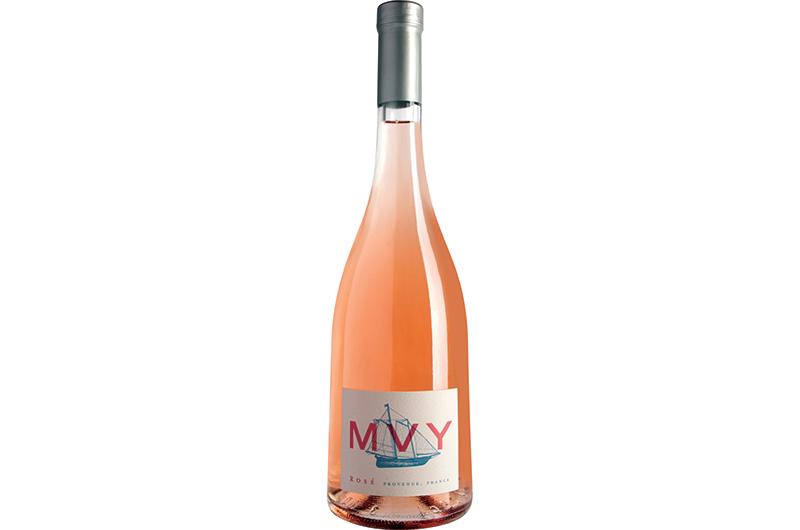It was with a healthy dose of skepticism, and then a healthy dose of admiration, that I discovered MVY rosé.
The wine is produced in Provence, France, which is most definitely not Martha’s Vineyard. It is one of a series of wines tied to the places they are sold that are being marketed by Latitude Beverage, a Boston company. There is an ACK rosé for Nantucket, a NPT rosé for Newport, and a Live Free rosé for New Hampshire.
“A lot of people like Martha’s Vineyard, as do we,” said Terry Lozoff, of Latitude Beverage. “We think there’s a draw to that.”
The company began with an interesting business model. It searched for higher-end wineries in France that happened to have a year of oversupply. It purchased the extra wine and bottled it under its own brand names. Over the years Latitude built relationships with a number of wineries that now produce wines directly for it, so success is no longer a matter of opportunistic oversupply.

“These are not sweet, overly fruity wines,” Lozoff said. “You’re going to get bright acid, fresh berries, a classic Provence rosé.”
The cachet of the Vineyard name is not the only selling point. The wine retails for $19.99 and for every bottle of MVY rosé sold, the company donates $1 to the Martha’s Vineyard Boys and Girls Club.
“Not a bad deal at all,” said boys and girls club CEO Jessie Damroth. “It’s a great way to support the club if you’re into wine.”
The company says it expects to sell about 10,000 bottles of MVY rosé this year, which will translate to $10,000 for the Island organization.
“It allows them to give back in a different way, through something they’re buying anyway for their restaurants and stores, and truly have a local impact,” said Damroth.
Though she sometimes has to explain that the wine is not made here on Martha’s Vineyard, Julia Celeste of Rosewater Wine and Spirits in Edgartown said the rosé has been a good product for the store.
“We did a tasting,” Celeste said. “Everyone who tried it really loved it.”
She said the marketing based on place works in two ways, depending on what place you are from.
“We do tell people that a dollar from every bottle goes to the boys and girls club,” Celeste said. “I think for on-Island consumers that makes a difference. For people who are here visiting, the Martha’s Vineyard label as a take-home present, as a souvenir from their trip, is really what’s driving
the sale.”
Everybody wins.
“Either way, it makes me feel better,” Celeste said.
When I got back to the Thirsty Test Kitchen, the minions were, as usual, sitting around waiting to be asked to taste something, so I assigned them an investigative caper. The tasting notes for the Vineyard bottle suggest aromas of wildflowers that “leap from the glass,” while strawberries are more prevalent in the Nantucket blend. And yet they tasted...the same.
Confirmation from multiple sources proved they are in fact identical wines – a notion certain to horrify residents of both islands. Like it or not, we’re all wearing rosé pants now.






